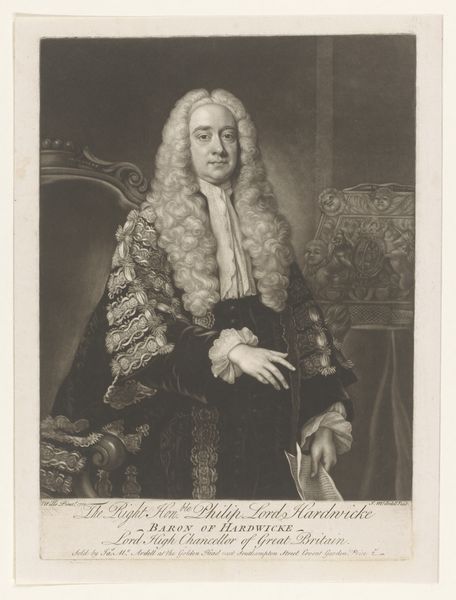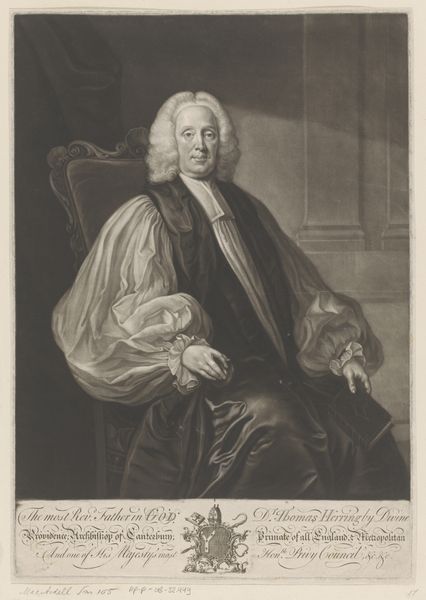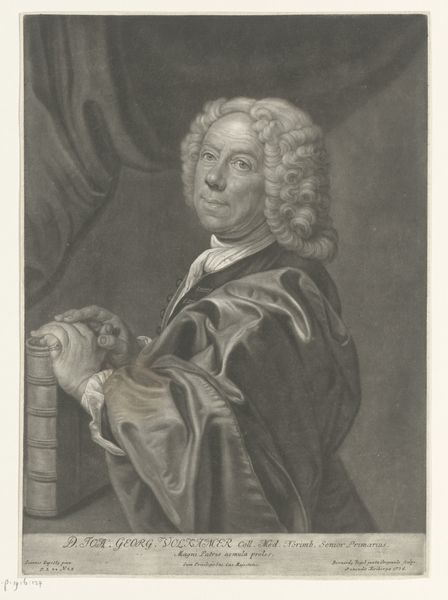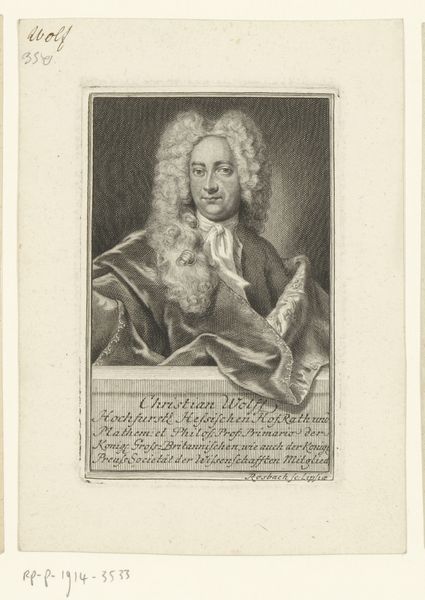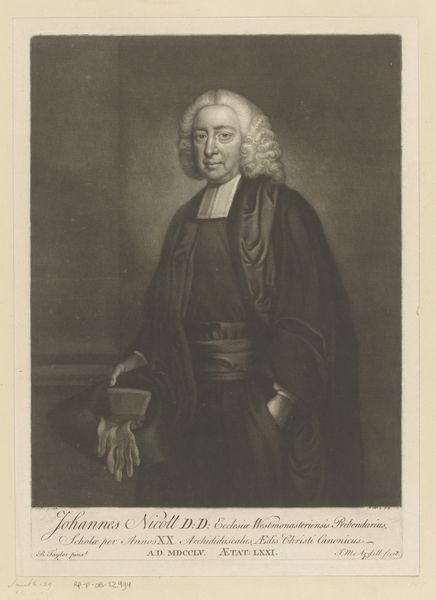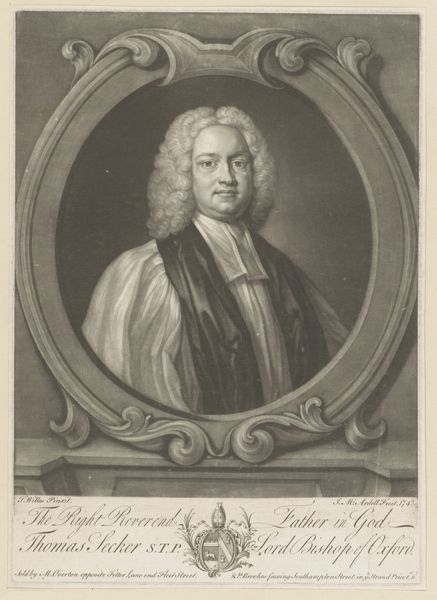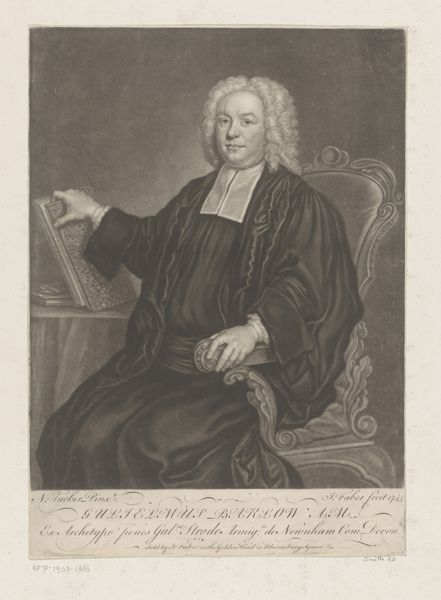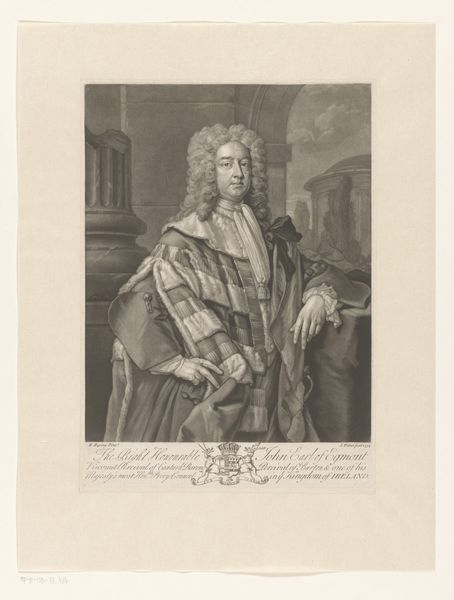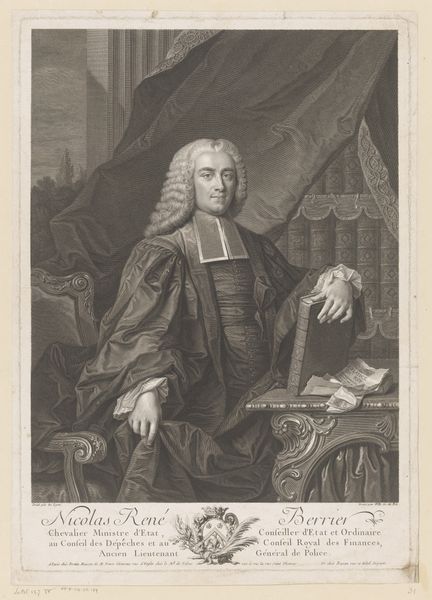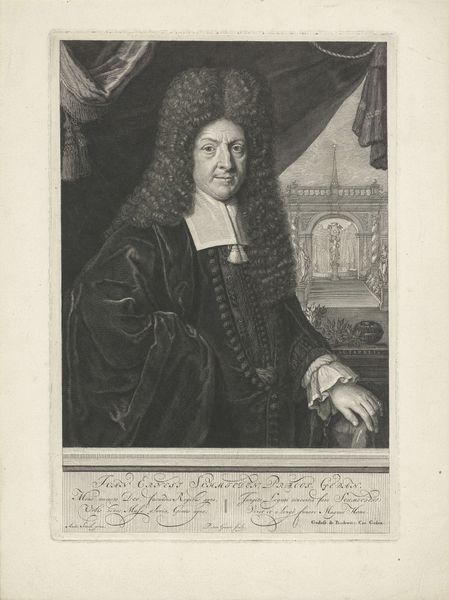
metal, engraving
#
portrait
#
baroque
#
metal
#
history-painting
#
engraving
Dimensions: height 354 mm, width 253 mm
Copyright: Rijks Museum: Open Domain
Editor: So, this is a print titled "Portret van William Wake" by John (II) Faber, made sometime between 1716 and 1756 using engraving. The portrait evokes a sense of formality, and the subject seems very distinguished. What catches your eye? What do you see in this piece? Curator: I’m immediately drawn to the symbology and imagery laden within this portrait. The elaborate wig, the vestments, the book – they're not just representations, but cultural markers signifying authority and intellect, harkening back to traditions both ecclesiastical and academic. Notice how his hand gently rests upon the book. Do you sense a similar connection between gesture and symbolic meaning elsewhere in the portrait? Editor: Perhaps, but not as obviously. The chair might suggest authority. Curator: Precisely! And consider the coat of arms. Though seemingly decorative, these elements function as memory devices, connecting Wake to a lineage and legacy – almost like a family memory, wouldn't you agree? Also note how it uses dark and light not merely to represent physical reality, but to evoke a particular feeling. The deep blacks create a serious tone while the use of light emphasizes prestige and class. Do you notice the particular expression on the face? It conveys dignity, but perhaps also something more subtle? Editor: I see it, yes, a hint of thoughtfulness. It gives him more depth than just being a figure of authority. It really adds a sense of dimension, even intimacy. Curator: Exactly! And intimacy—that, itself, is the key, linking the public figure to our individual, emotional experiences. He seems to acknowledge us as a witness. Editor: I didn't really notice all that detail at first. I was simply focusing on his robe and curly hair, which, clearly, are iconic symbols. Now I see it differently—a window into his historical and symbolic place in the culture of his time. Curator: And a potent reminder that images are rarely just images.
Comments
No comments
Be the first to comment and join the conversation on the ultimate creative platform.
